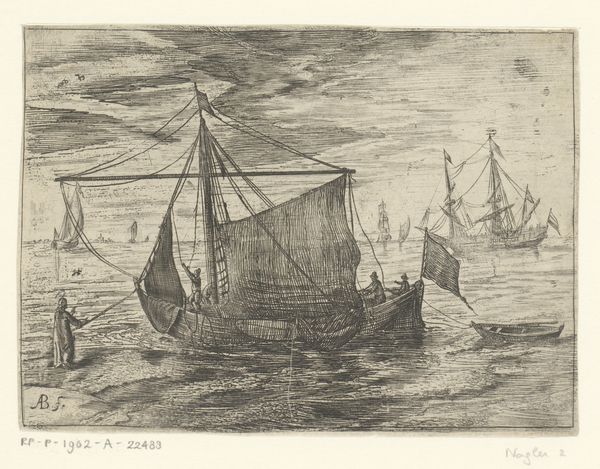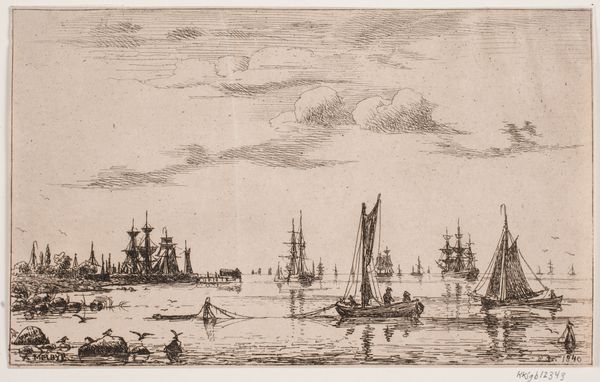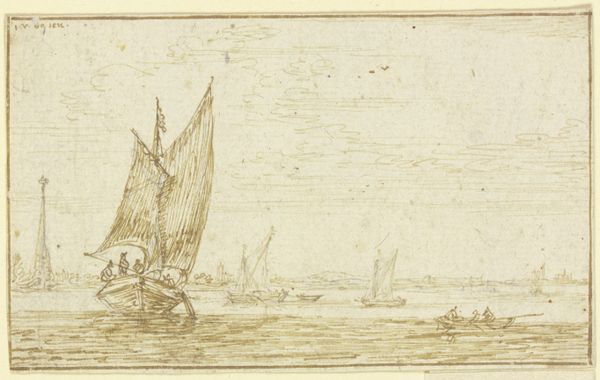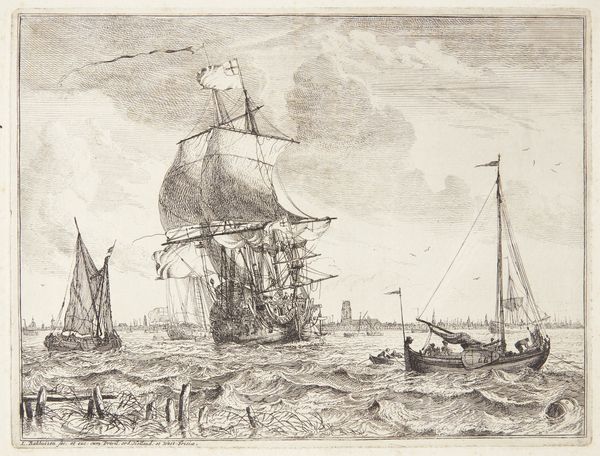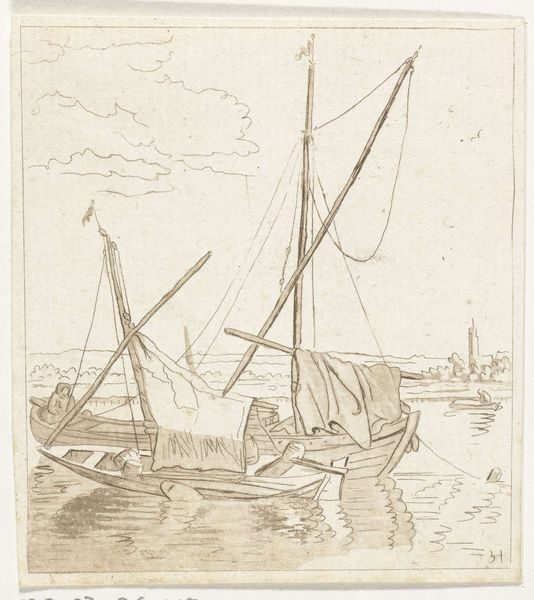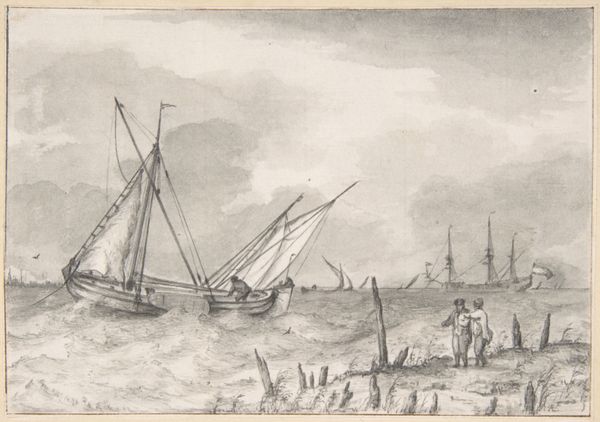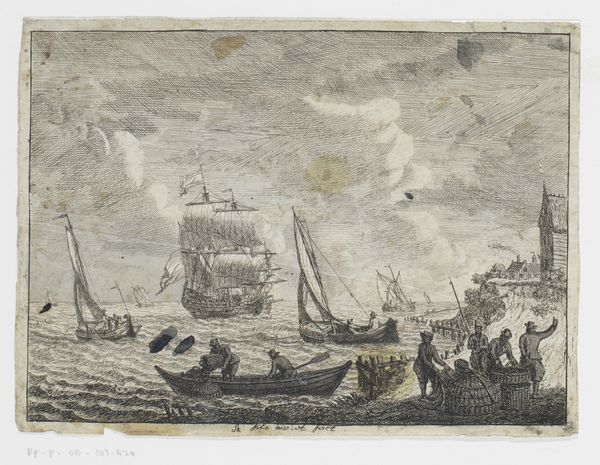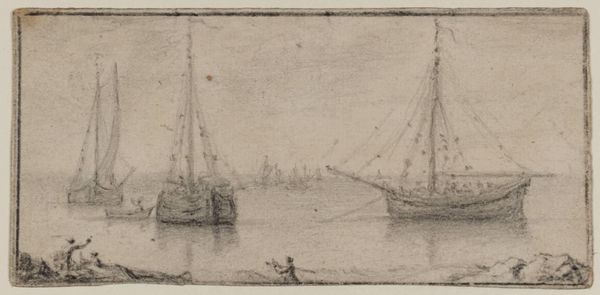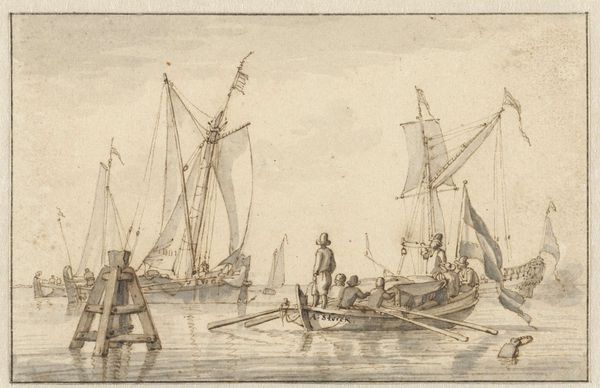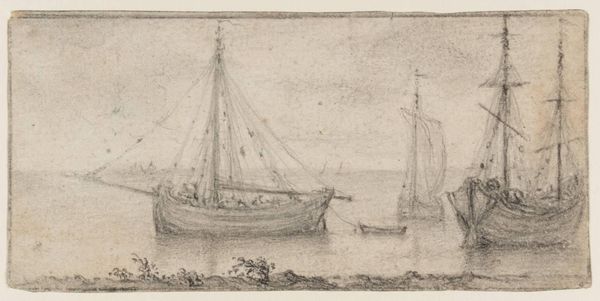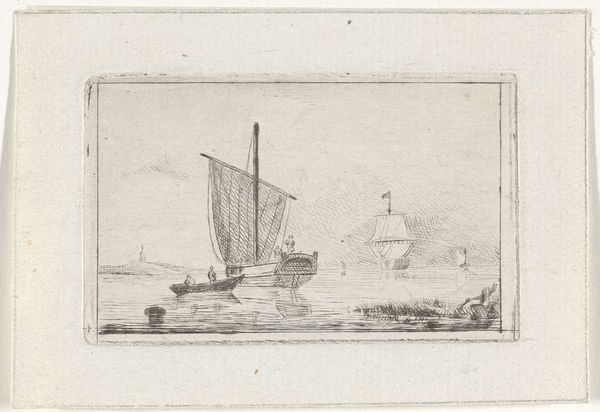
drawing, print, etching
#
drawing
# print
#
etching
#
landscape
#
romanticism
Dimensions: plate: 2 5/8 x 4 11/16 in. (6.6 x 11.9 cm)
Copyright: Public Domain
Editor: This is Charles Meryon’s "South Sea Fishers," an etching from 1850, currently at the Met. It’s amazing how much detail he got from just etching! What story do you think the materials and labor behind this piece tell us? Curator: Well, focusing on the materials, we have to consider the copper plate, the acids used for the etching, the paper, and the ink. Each of those was a commodity, available to Meryon thanks to a whole network of extraction, production, and distribution. He isn't just representing boats and water; he's engaging with an entire economic system through his artmaking. The etching process itself, that meticulous labor, turns the materials into a social commentary. Editor: So, the means of production becomes a part of the art itself. But what is it commenting on? The labor seems pretty idealized. Curator: I would argue that by depicting this maritime scene through etching, Meryon calls attention to the very *idea* of work and commodity. Who were the consumers of such imagery? What did these depictions of labor mean to them? Consider the relationship between the depicted labor of the fishers and Meryon's own labor intensive process in creating this print, available for purchase. There is a class-conscious aspect here. Is he romanticizing the fishers’ labor, or is he also implicitly criticizing a system where he is producing art for an elite audience, about laborers from whom he is quite removed? Editor: That reframes the entire picture. It's less a peaceful harbor scene and more a reflection on class and consumption. I hadn’t considered the economics inherent in even creating the piece! Curator: Exactly. This romantic depiction has everything to do with the economy it depicts and the economy in which Meryon created his etching. Even the choice of etching as a medium implies engagement with production for consumption on various class levels, when one examines labor. Editor: Thanks. It's been great to think about the making and consuming of art. It helps to unlock meanings I usually overlook.
Comments
No comments
Be the first to comment and join the conversation on the ultimate creative platform.

